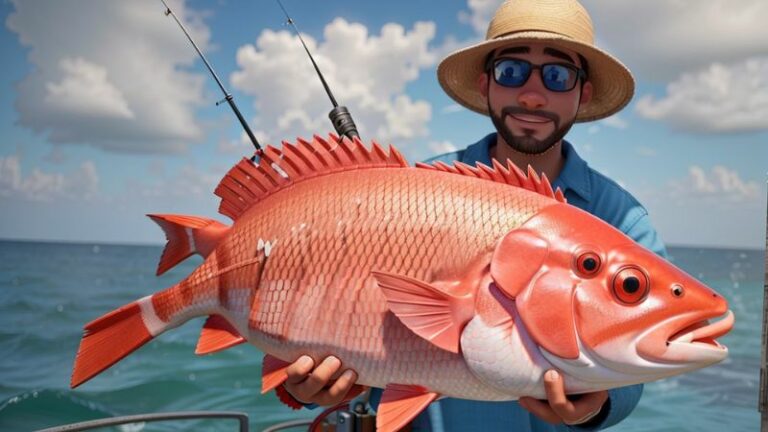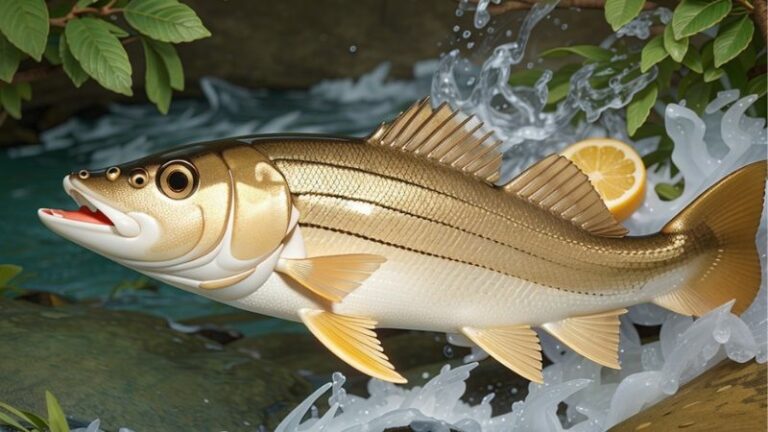How do sonar fish finders work?
Today we discuss sonar fish finders work. Sonar fish finders employ sound waves to detect underwater objects. By measuring the time it takes for a wave pulse sent out by the device to return, sonar technology is able to accurately determine how far away an object is – and in this case, just maybe that elusive fish!
Today’s sonar fish finders take the guesswork out of angling, using cutting-edge single or dual-frequency technology for precise readings. Dual frequencies send twice as much information to your device at once – allowing you to accurately identify objects nearby and farther away with ease.
A Brief History of sonar Fish Finders:
The first patent for a sonar fish finder was awarded to Paul Langevin in 1917. However, the technology wasn’t put into practical use until the 1930s. In those early days, sonar fishfinders were mounted on boats and could only pick up signals from objects directly below the boat.
It wasn’t until the late 1950s that transducers were developed that could send and receive signals through water, making it possible to detect fish beneath the boat as well as to the sides. And it wasn’t until the early 1970s that portable sonar fishfinders were first introduced.
sonar vs fish finder:
- Sonar
Sonar is a technology that uses sound waves to detect objects underwater. It is commonly used by the military to detect submarines, but it can also be used to detect fish. Sonar works by sending out a sound wave and then measuring the time it takes for the wave to bounce back. The longer it takes for the wave to bounce back, the deeper the object is. - Fish Finder
A fish finder is a device that uses sonar to detect fish. Fish finders are commonly used by fishermen to locate fish in order to catch them. Fish finders work by sending out a sound wave and then measuring the time it takes for the wave to bounce back. The longer it takes for the wave to bounce back, the deeper the object is. - Advantages of Sonar
One advantage of sonar is that it can be used to detect objects at greater depths than other technologies. Sonar can also be used to detect smaller objects than other technologies. Additionally, sonar is not affected by light or darkness, making it ideal for use in deep water or at night. - Advantages of Fish Finders
One advantage of fish finders is that they are specifically designed for detecting fish, which makes them more accurate than sonar devices that are not specifically designed for this purpose. Additionally, fish finders often come with other features that can be useful for fishermen, such as GPS and mapping capabilities. - Disadvantages of Sonar
One disadvantage of sonar is that it can be disruptive to marine life. Additionally, sonar waves can be reflected off of hard surfaces, making it difficult to determine the exact location of an object
type of sonar fish finder:
-Single beam sonar fish finders send out a single “ping” and then listen for the return signal. This type of sonar is good for finding large objects that are relatively close to the boat.
-Dual-beam sonar fish finders send out two pings – one near the surface of the water and one near the bottom – and then listen for the return signals. This type of sonar is good for finding both large objects that are close to the boat and small objects that are further away from the boat.
-Side scan sonar fish finders send out a series of pings in a fan-like pattern and then listen for the return signals. This type of sonar is good for finding large objects that are further away from the boat, as well as objects on the seafloor.
Each type of fish finder has its own advantages and disadvantages, so it’s important to understand what you need before you purchase one.
How do sonar fish finders work?
Taking the guesswork out of fishing, sonar fish finders help anglers hone in on their prey with surgical accuracy. By emitting sound waves that bounce off objects underwater and back to the system’s receivers, a map is created which indicates where schools of fish – as well as depths they swim at – may be located. With this invaluable tool, fishermen can target specific areas for success!
2 best sonar fish finders:
- Deeper PRO+ Smart Sonar Castable and Portable WiFi Fish Finder
- ReelSonar Wireless Bluetooth Smart Fish Finder
Deeper PRO+ Smart Sonar Castable and Portable WiFi Fish Finder:
No products found.This product is a deep-sea fish finder. It casts out up to 330ft and scans down to 260ft. It is compatible with iOS and Android devices. It uses its own Wi-Fi (like a hotspot). No internet or cellular data is needed. You can create bathymetric maps from the bank, boat, canoe, or kayak. Access all your scans, maps, points of interest, photos, and notes on the Fish Deeper app and web platform.
ReelSonar Wireless Bluetooth Smart Fish Finder:
No products found.The ReelSonar Classic fish finder is battery-powered and has a 5-inch screen. It uses Bluetooth to connect to your iOS or Android device. The sonar signals show images of objects in the water, including fish. The depth-tagged fish icons are color-coded by size. You can turn on the fish alarm to be alerted when fish congregate under docks and piers, and the strike alert will let you know when fish are biting.
a sonar fish finder cost:
The cost of a sonar fish finder will vary depending on the features and quality you require. Mid-range models can range from $150 to $350, while high-end models may cost over $500. Prices vary greatly from store to store so it is important to shop around and compare prices before making a purchase. Many online retailers also offer discounts and deals that can help reduce your overall cost.
Additionally, many stores have financing options available to help make purchasing a sonar fish finder more affordable. All in all, the total cost of owning a sonar fish finder could range anywhere from as little as $50 up to several hundred dollars or more depending on your needs and budget.
If you are just starting out, you may want to look at lower-priced models to get a feel for the technology before investing in a more expensive model. No matter what your budget is, there is sure to be an option that fits your needs and helps you land your next big catch.
some benefits of using sonar fish finders:
- You can find fish in deep water: If you’re fishing in deep water, a sonar fish finder can be a valuable tool. By using sound waves, a sonar fish finder can help you locate schools of fish that might be swimming at depths that are too great for your line to reach.
- You can find fish in murky water: Murky water can make it difficult to see fish, but a sonar fish finder can still help you locate them. By using sound waves, a sonar fish finder can penetrate the murk and give you a better idea of where the fish are swimming.
- You can find fish in dark water: Just because it’s dark outside doesn’t mean you can’t go fishing. A sonar fish finder can help you locate fish in dark water by using sound waves to create an image of what’s below the surface.
- You can avoid obstacles: A sonar fish finder can also help you avoid obstacles that might be lurking beneath the surface of the water. By using sound waves, a sonar fish finder can detect things like rocks, logs, and other objects that could snag your line or cause you to lose your catch.
- You can find schools of baitfish: If you’re trying to locate a school of baitfish, a sonar fish finder can be a helpful tool. By using sound waves, a sonar fish finder can help you locate baitfish even if they’re swimming at depths that are too great for your line to reach.
- You can track your progress: A sonar fish finder can also help you track your progress as you move through the water. By recording data like depth, temperature, and bottom contour, a sonar fish finder can help you keep tabs on where you’ve been and where the best fishing spots are.
What to look for when buying a Sonar Fish Finder?
Consider the following factors when purchasing a sonar fish finder: the type of transducer included with the unit (which affects accuracy), the frequency range (measured in kHz), and the beam angle of the transducer (affects size/type of fish detectable). Other features to look for include: display type (LED to LCD), a wide range of sonar functions/settings, the power output level of the transducer, and included transceiver.
faqs for sonar fish finders work:
When it comes to choosing a fish finder, the most important thing is finding one that meets your individual needs and budget. Top-of-line brands such as Garmin, Humminbird, and Lowrance offer numerous models to choose from- whether you’re seeking something basic or more advanced with powerful sonar capabilities. For beginners just embarking on their fishing journey, the initial setup should include features like water temperature readings and GPS tracking for well-informed decisions when out in the wild!
Yes, sonar is an effective tool for fishing. Fish finders are devices that use sonar to detect the location of fish in the water. They work by transmitting sound waves into the water, then measuring and interpreting the echo that bounces back off any objects in the water (such as fish). This helps anglers locate schools of fish, track their movements, and determine what types of fish are present. Sonar devices can also provide valuable information about the structure of the bottom of a lake or river, which could help anglers locate areas where fish might be hiding.
Making a sonar fish finder involves several steps. First, you will need to acquire the necessary components for your system. This includes an LCD display, transducer, and power source. Next, mount the transducer onto the boat hull or trolling motor shaft and secure it with screws or bolts. Be sure to use a mounting bracket if necessary.
Once your transducer is mounted, wire it to the power source according to the manufacturer’s instructions. Once that is done, connect the LCD display and power source with the appropriate cables.
Yes, you can use a fish finder without a boat. Many modern fish finders are designed to be used from the shore or on a kayak or any other type of watercraft. Portable fish finders are also available that allow you to easily move them around and set them up quickly.

final words:
By emitting sound waves and measuring the time it takes for them to bounce back, fish finders can give you a pretty good idea of how many fish are in an area and how big they are. The downside is that fish finders can be expensive, so make sure to do your research before making a purchase. Have you ever used a sonar fish finder? What was your experience like?



